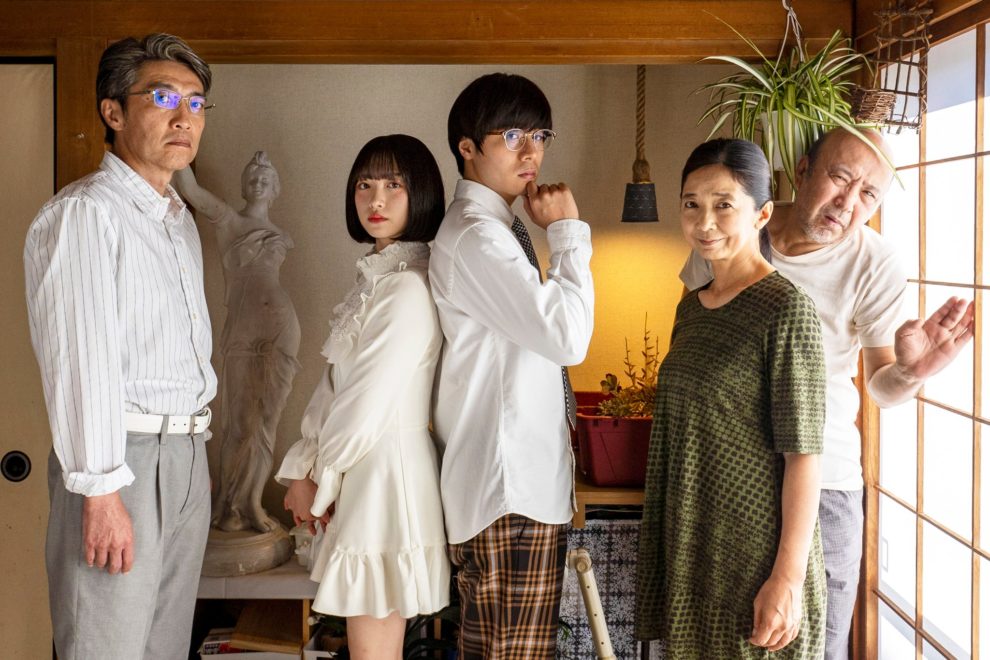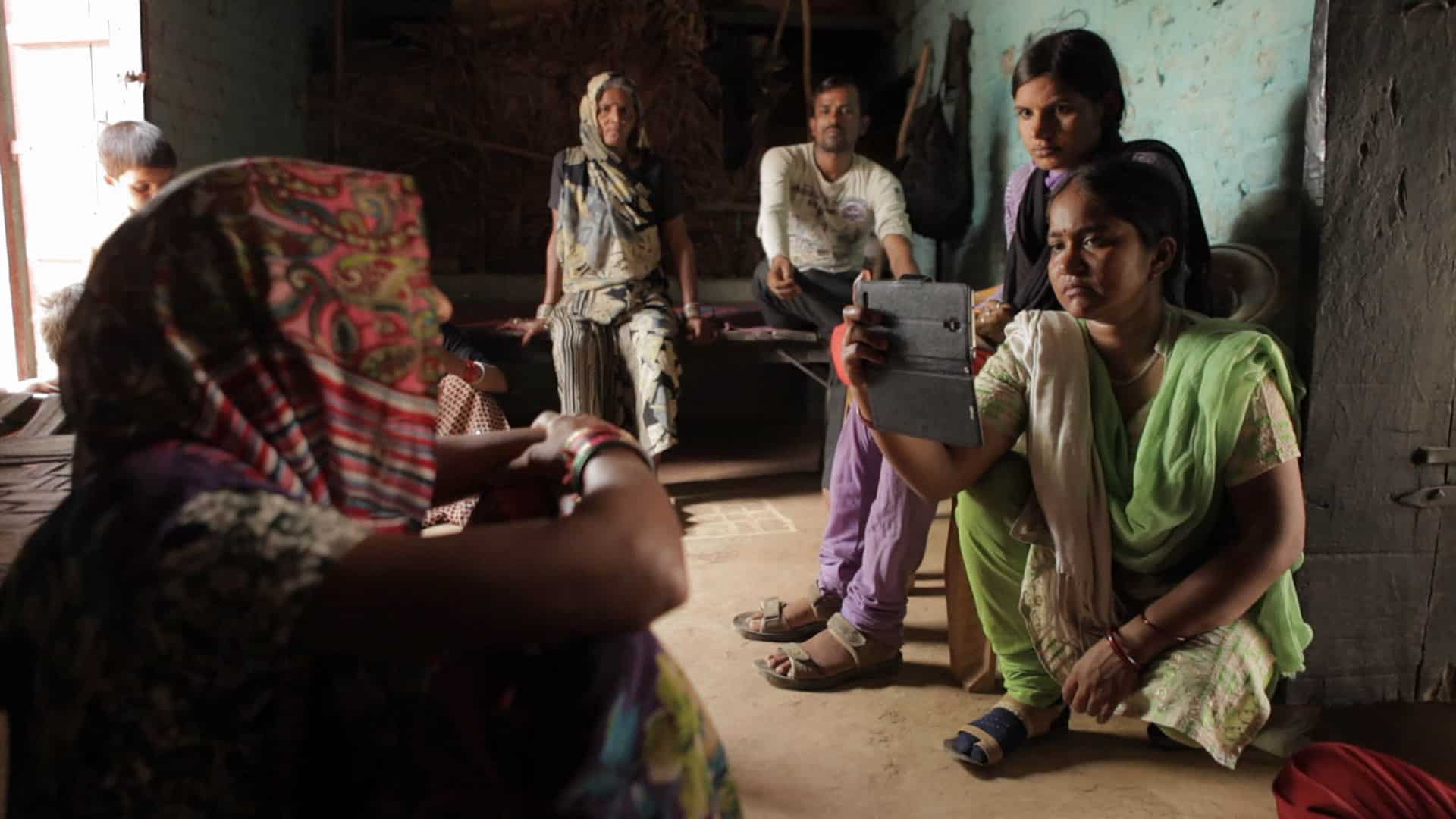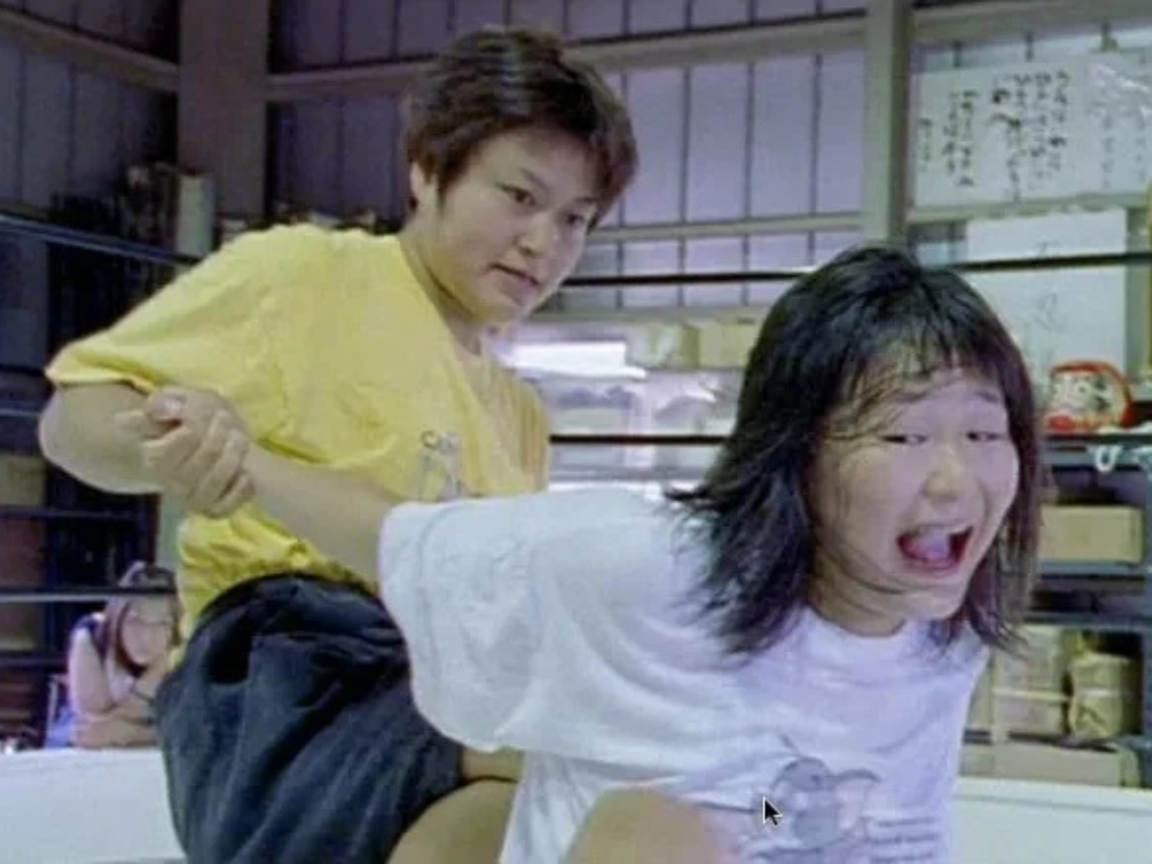The result of the PFF Scholarship for 2020, “Cat and Salt, or Sugar” is the first feature film of Takashi Komatsu, who, back in 2016, won the PFF Grand Prix, with his middle length, “Out of the Frying Pan”.
“Cat and Salt, or Sugar” screened at the 42nd PIA Film Festival

Ichiro is a kind of hikikomori who lives with his timid mother, Keiko and his alcoholic father, essentially allowing the former to treat him like some sort of a pet and particularly a cat, as he so eloquently states in the beginning of the film. The two of them are essentially a team, and have alienated his father, whose obnoxious behaviour, however, definitely justifies their attitude. One day, while on a trip with his mother, they stumble upon an ex-boyfriend of hers, Mr Kaneshiro and his daughter, and through a series of rather illogical events, they invite them to stay in their house. The daughter seems to be even quirkier than Ichiro, always trying to clean everything, while her father is soon revealed to be a rather controlling figure, who insists on his daughter becoming an idol, and tries to micromanage Keiko, mostly in order to “let Ichiro go”. Inevitably, an “underground war” between the two men begins, as Ichiro tries to convince his mother that her new beau is a fraud. At some point, his father wakes up from his drunken stupor, while the clash of men leaves Keiko in shambles.
Takashi Komatsu directs a movie whose main element is quirkiness and the way it manifests within families, a concept that actually extends to every aspect of the movie. The movie presents a number of dysfunctional individuals, all of which seem to represent a certain demographic of Japanese society, ending up living in the same house, in a setting though, that somehow manages to appear dystopian/sci-fi like.
The alcoholic, older father who has essentially given up, the mother who cannot let her son go, is tired of her marriage and looks for romantic adventures in her past, the unemployed middle-aged man who tries to control everyone around him, the idol-wannabe daughter and the hikkikomori Ichiro all come together in an absurd but also somewhat realistic portrait of Japanese society. The clash that is created through having all of them live together is inevitable, and essentially allows Komatsu to make his comments about the dysfunction of three generations, and essentially, of the concept of family. At the same time, and although every character can be perceived as a sort of archetype, their overall behaviour and even their appearance in the case of the all-white Mr Kaneshiro and his daughter is so extreme, that the movie occasionally seems like some sort of domestic dystopia.
The fact that both dialogues and the occasional monologues by Ichiro are rather profound and analytical, adds even more depth to the narrative, as Komatsu uses his character to make a number of comments, essentially about all the aforementioned concepts.

At the same time, though, and particularly through a duration that almost reaches two hours, the director seems to lose his sense of measure, which was quite difficult to retain considering how many fronts he opens throughout the movie. In that regard, a bit of tighter editing would definitely benefit the narrative, as this intense approach, although interesting, becomes somewhat tiresome after a point, as the episodes pile up.
On the other hand, technically the movie is rather impressive. The cinematography is top-notch, particularly through the way the coloring, the framing and the placing of the camera, which frequently presents the action from above, either in 3/4 or directly from above, mirror the overall quirkiness of the narrative. The same applies to the editing, with the unusual, frequent cuts intensifying the eccentricity of the whole production. The art direction emerges as the most memorable trait, with the way the various rooms are set adding much to the narrative, particularly as extensions of the psychology and the character of the protagonists.
The acting is also on a very high level, with Narushi Ikeda as Mr Kaneshiro, Rinne Yoshida as his daughter, Yoshiko Miyazaki as Keiko, Taro Suwa as her husband and most of all, Kentaro Tamura as Ichiro embracing the absurdness of the movie, while making the most of appearing unruffled by the extreme events that take place around them.
“Cat and Salt, or Sugar” is a well-shot movie, while Takashi Komatsu has some very interesting ideas, and he knows how to present them in cinematic terms. On the other hand, I felt that the movie emerges as one that will be very difficult to be understood by people who are not Japanese, although the overall artistry can appeal to even those who do not understand the movie fully.















